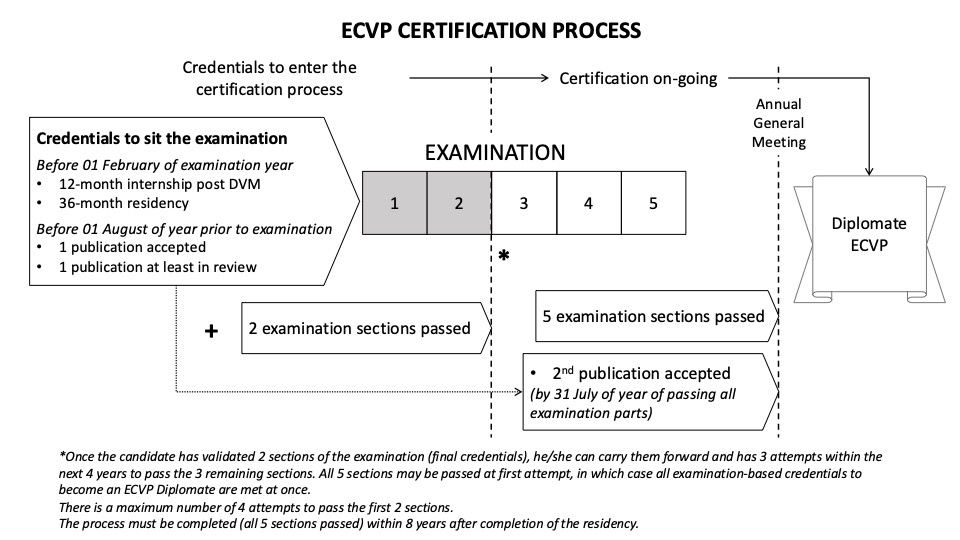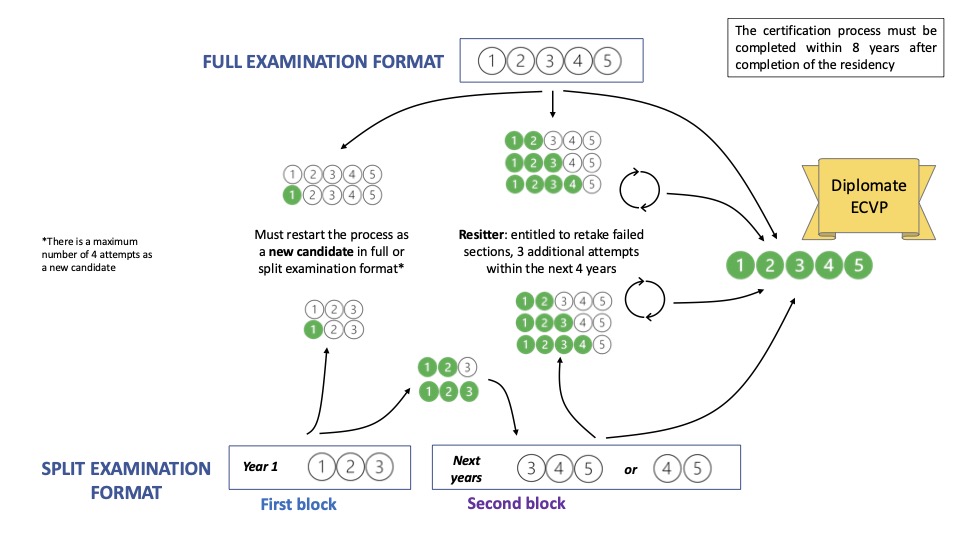In General
The examination usually takes place in late January or early February each year. It starts with Histopathology on Monday morning, followed by Gross Pathology on Monday afternoon. Tuesday starts with General Pathology in the morning followed by Veterinary Pathology in the afternoon. Comprehensive Pathology is on Wednesday morning.
Candidates will be randomly assigned a seat. Candidates have the possibility to set up their own or hired microscope before the examination (Sunday evening or Monday morning). They may use pens or pencils; they may have food, drinks and a silent laboratory timer on the table. No other utensils, in particular noisy timers, mobile phones and smartwatches, are allowed. A cushion may be used (take it with you) on the seat when needed. On the morning of the examination, the candidates draw a number by a non-Examination Committee member and their examination-papers are only identified by this number and not by name, so that correcting is not biased. Dictionaries in various languages (covering the nationalities of the candidates) are available at the front of the examination room. Candidates are not allowed to talk to each other under any circumstances. In addition, candidates are not allowed to take any examination material or notes in or out the examination room. Contravention is regarded as cheating. Candidates are accompanied if they leave the room during the examination.
Examination Structure
The examination tests a balanced mix of general, specific, theoretical and practical knowledge relevant to the veterinary pathology profession. It comprises five sections: Histopathology, Gross Pathology, General Pathology, Veterinary Pathology and Comprehensive Pathology. To pass the examination, a candidate must pass each of these five sections.
ECVP examination - guidance document.pdf
Passing rate and correction
Each of the 5 sections is passed by reaching 60% of the total possible marks. For Veterinary Pathology, the section is passed if the candidate reaches a minimum of 60% considering the 3 subsections (large animals, small animals and minor item) as a whole (e.g., a candidate having 70% in large animals, 50% in small and 65% in poultry, will pass the section as the overall mark is above 60%).
For consistency reasons, each Examination Committee member marks a complete question (for example histology case 3) from all candidates. Every slide and question is marked independently by two Examination Committee members based on the scoring agreed by all members during the preparatory meeting. They then compare their marks (consolidation). If there is a discrepancy between marks, the answers are looked at again and the discrepancy is discussed until a final agreement is reached. All marks are registered in a computer program which calculates percentage of points reached per candidate, slide or question. The results from the first 4 sections are statistically analyzed at the Medizinische Fakultät der Universität Bern, Switzerland, Institut für Medizinische Lehre, Abteilung für Assessment und Evaluation for their quality and discriminatory power. All results are approved before disclosure of candidates’ names. A candidate has to have 60% of the total points possible in a section to have passed this section. ECVP Council has the final decision about approval of the results. Candidates are usually informed of their results within a couple of days.
Examination timelines
*Please note that the dates are indicative and they might change every year
- Examination application submission deadline – 01 August
- Applications Committee reviews applications – end of August/council meeting
- Applications results will be send out via email from the ECVP Office– September
- Microscope hire arrangements information will be provided – October
- Examination general information will be provided – November (for example: General info/ Examination timetable/ Lunch options/ Travel info)
- Examination further information will be provided– November/December/January (for example: Dos and don’t doc/ ExamSoft guide/ ExamSoft accounts creation and testing)



